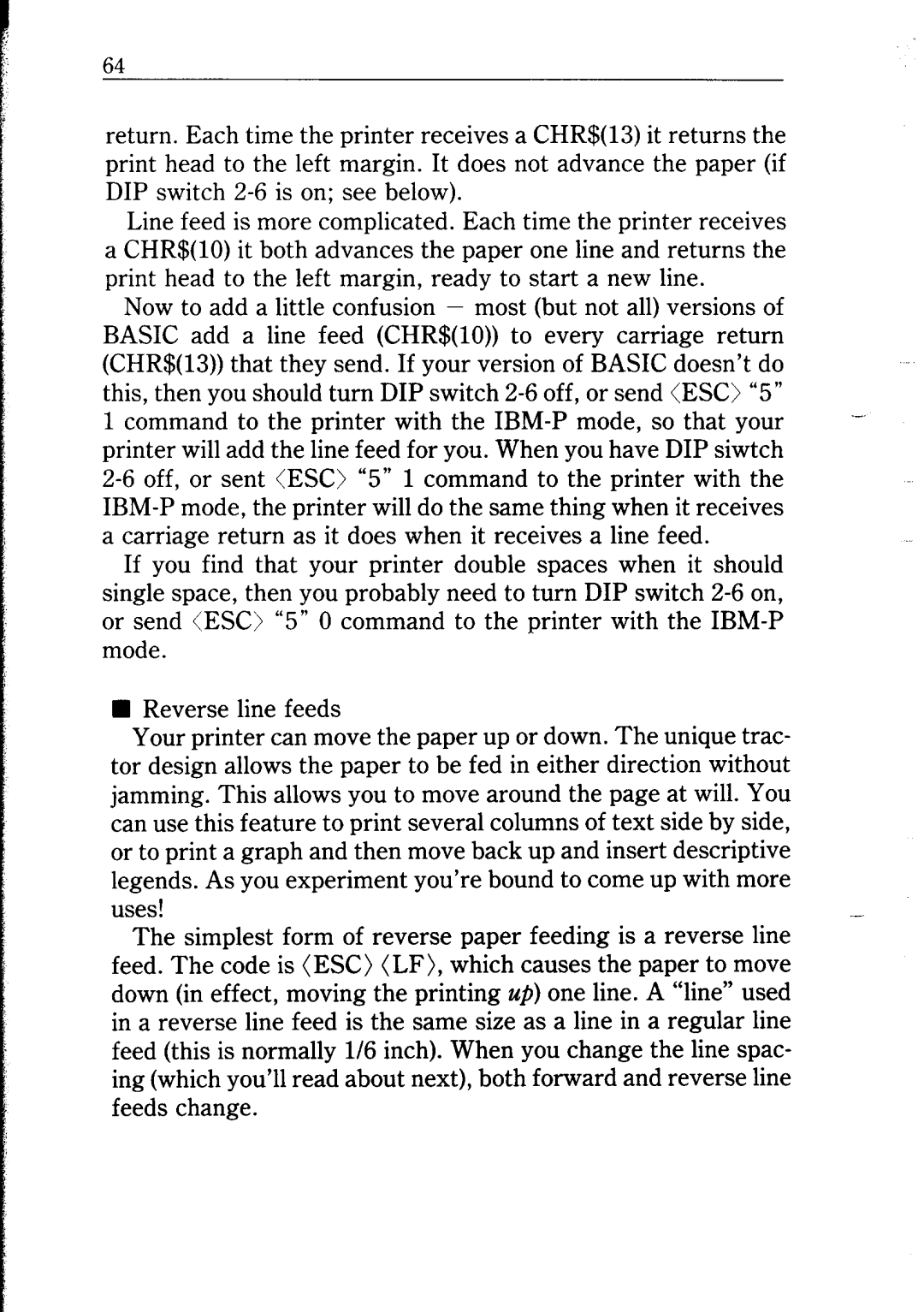
64 |
|
|
|
|
return. Each time the printer receives a CHR$(13) it returns the |
| |||
print head to the left margin. It does not advance the paper (if |
| |||
DIP switch |
|
|
| |
Line feed is more complicated. Each time the printer receives |
| |||
a CHR$(lO) it both advances the paper one line and returns the |
| |||
print head to the left margin, ready to start a new line. |
|
| ||
Now to add a little confusion - most (but not all) versions of |
| |||
BASIC add a line feed (CHR$(lO)) to every carriage return |
| |||
(CHR$(13)) that they send. If your version of BASIC doesn’t do |
| |||
this, then you should turn | DIP switch | “5” |
| |
1 command to the printer | with the | your | ||
printer will add the line feed for you. When you have DIP siwtch
If you find that your printer double spaces when it should single space, then you probably need to turn DIP switch
nReverse line feeds
Your printer can move the paper up or down. The unique trac- tor design allows the paper to be fed in either direction without jamming. This allows you to move around the page at will. You can use this feature to print several columns of text side by side, or to print a graph and then move back up and insert descriptive legends. As you experiment you’re bound to come up with more uses!
The simplest form of reverse paper feeding is a reverse line - feed. The code is (ESC) (LF), which causes the paper to move
down (in effect, moving the printing up) one line. A “line” used in a reverse line feed is the same size as a line in a regular line feed (this is normally l/6 inch). When you change the line spac- ing (which you’ll read about next), both forward and reverse line feeds change.
